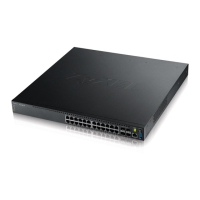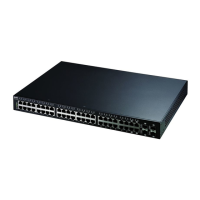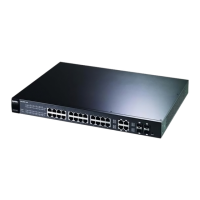GS3700/XGS3700 Series User’s Guide
458
CHAPTER 48
Access Control
This chapter describes how to control access to the Switch.
48.1 Access Control Overview
A console port and FTP are allowed one session each, Telnet and SSH share nine sessions, up to five
Web sessions (five different usernames and passwords) and/ or limitless SNMP access control
sessions are allowed.
A console port access control session and Telnet access control session cannot coexist when multi-
login is disabled. See the Ethernet Switch CLI Reference Guide for more information on disabling
multi-login.
48.1.1 What You Can Do
• Use the Access Control screen (
Section 48.2 on page 458) to display the main screen.
• Use the SNMP screen (
Section 48.3.4 on page 465) to configure your SNMP settings.
• Use the Trap Group screen (
Section 48.3.5 on page 466) to specify the types of SNMP traps that
should be sent to each SNMP manager.
• Use the User I nformation screen (Section 48.3.7 on page 469) to create SNMP users for
authentication with managers using SNMP v3 and associate them to SNMP groups.
• Use the Logins screens (Section 48.4 on page 471) to assign which users can access the Switch
via web configurator at any one time.
• Use the Service Access Control screen (Section 48.10 on page 479) to decide what services
you may use to access the Switch.
• Use the Remote Managem ent screen (Section 48.11 on page 480) to specify a group of one or
more “trusted computers” from which an administrator may use a service to manage the Switch.
48.2 The Access Control Main Screen
Use this screen to display the main screen. Click Managem ent > Access Control in the
navigation panel to display the main screen as shown.
Table 227 Access Control Overview
Console Port SSH Telnet FTP Web SNMP
One session Share up to nine
sessions
One session Up to five accounts No limit

